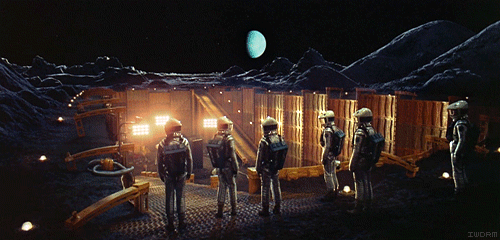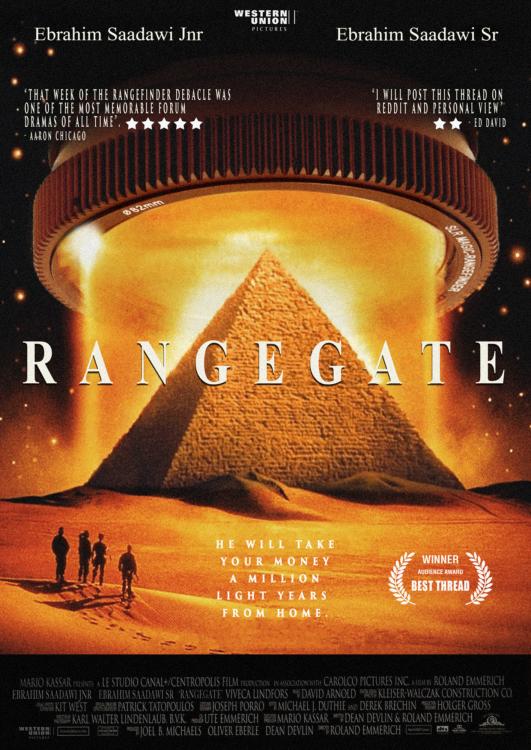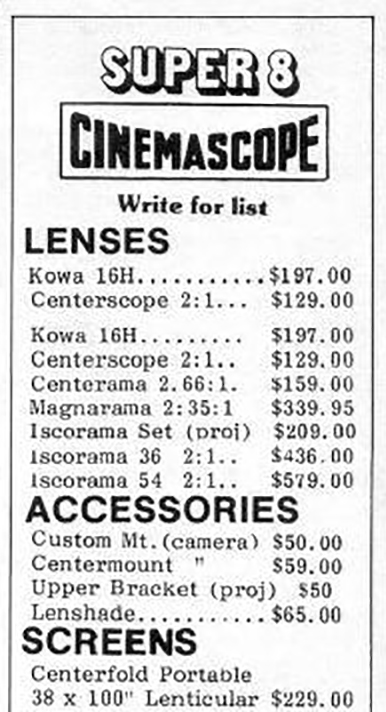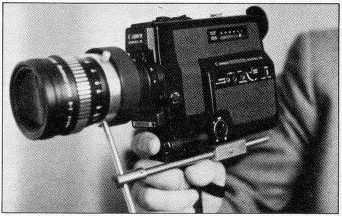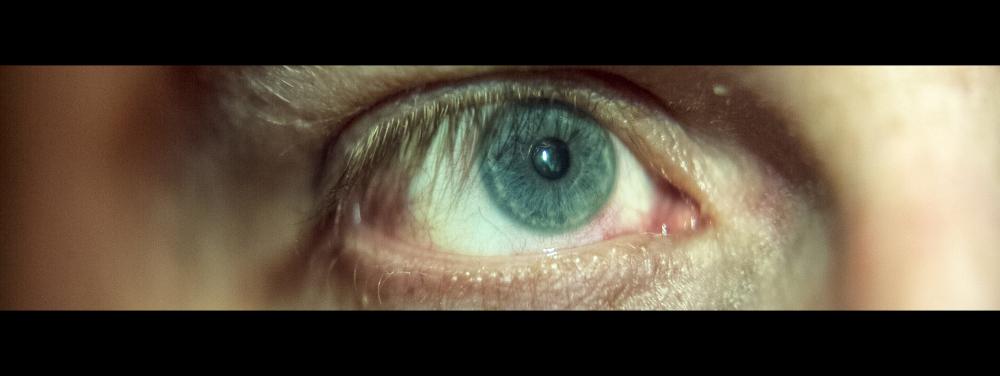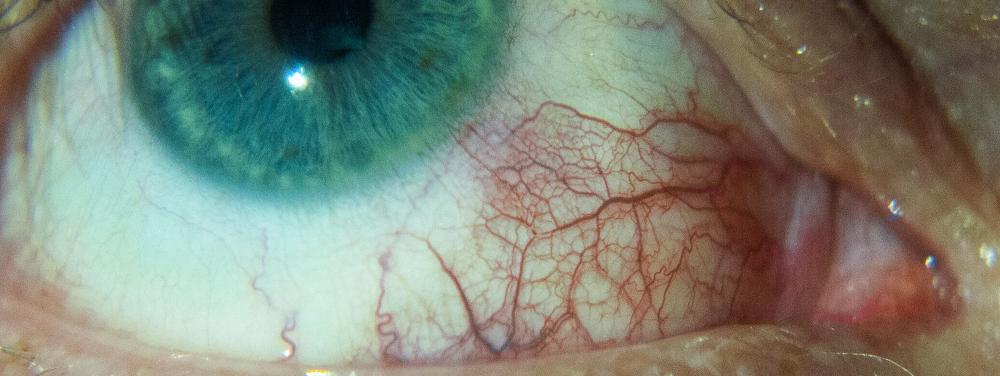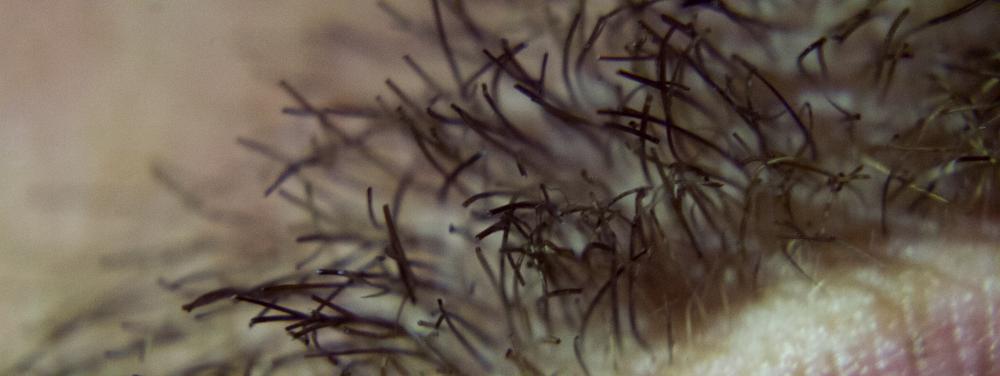-
Posts
632 -
Joined
-
Last visited
Content Type
Profiles
Forums
Articles
Everything posted by Hans Punk
-
@Jim Chang Also...and a non focus motor option to the kit would be awesome for those (like me) who would like to use their existing Berkey focus motor. If you could supply an open ended 4 core cable (with pin-out description) would make it very easy to wire a compatible cable. By the looks of it, the Berkey motor would have a bit more of a flexible reach and slimmer profile to get closer to smaller taking lenses. I use mine with a motion control rig, and have never encountered a lens that I can't use it on... (including pancake lenses). http://store.berkeysystem.com/focus-motor/ Unless your motor has encoder to register position data for the controller?...in which case third party motor support is not possible I expect.
-
This would be ideal. Also, having the encoder (with 0.8 pitch gear with 15mm rod mount) would allow it to be moved and positioned for larger, awkward lenses...that would not work well with traditional FF units (and may be more practical to focus by hand). Having the encoder engaged directly to the anamorphic focus rotation also maintains 'absolute' calibration...if encoder is reading from FF shaft input rotation, sometimes the gear teeth can jump the lens gear if a stiff focusing lens hits a hard stop. That would then throw off any precise sync that would be driving the taking lens stepper motor. Very interested in the setup, I can see many great applications, especially being able to integrate with other focus solutions.
-
Looks great Jim! is it possible to have the FF encoder on a separate rail mount so that focusing can be made by hand (or is it hard coupled to supported FF models?)...would be great option to have as an independent encoder, being FF type agnostic and act as a slave for other FIZ motors via mechanical input/relay. This would be a very flexible solution for existing owners of FF units that are not on your list...as well as allow motion control /remote focus rigs with FIZ motors to be mechanically synced to a taking lens slave. I guess now the only issue now is taking lenses that considerably extend (travel) when focusing. Having the setup locked down to rails could limit the proximity of a lens to anamorphic rear...maybe a mini flexible donut connector would work for many scenarios. can different taking lenses be calibrated on the fly with a remote?...or does it have to be done with external software. Would it be practical to save presets for different taking lenses and switch settings after a lens change? I look forward to more info...this looks very much like the solution I was thinking about experimenting with. I can see it being a very attractive solution for larger lenses that require rail mounting anyway...lomo nap type lenses might be going up in value soon Big kudos for getting something working!
-
When I have some spare time, I'm planning to do a little shoot with my Kowa B&H, Kowa inflight 1.75x (both with Core DNA) and iscorama pre 36 (with 3.5ft close focus mod) on full frame with recent 3-4K magic lantern crop resolutions. I will probably throw in some iscomorphot s8 2x shots in there (because it's ridiculously underrated for portrait/closeup compositions). Think the Bolex 16/32 is the only lens I'd actually be interested in trying out...the recent Bolex+ML footage from @SigurdW looks great.
-
Im currently getting 3440x1288 @ 2.67:1 aspect continuous recording at ISO 800 on a 1066x Komputerbay card. EDIT: Sometimes it gives me continuous status, which makes me think other factors are effecting compression value (or simply just an incorrect MB/s etimate?) EDIT EDIT: seems my 3400x1288 was on condition of simplistic detail in scene...as soon as pointed the camera at something with detail the estimated MB/s was 150MB/s...hmm. I've not recorded longer than 1min yet to check on the high res settings. I'm looking forward to testing properly this weekend...but am pretty confident in knowing that the current choppy live view will be improved at some point so might save a proper test when I can properly see what I'm shooting
-
As far as I understand, it is the build that often yields very slightly more efficient memory and write speed...due to not having the addition of outputting clean HDMI/ duel monitor etc. Since the 4k build is bleeding edge, I assume any attempt to optimise processor/memory use is ideal to squeeze out as much juice as possible.
-
That is why I've broken my rule of only owning vintage lenses....because of ML I now own a 8mm Sigma and Tokina 11-16 which at first made me feel a little sick with their soulless character...but they counteract ML crop on the 5D3 beutifully and can be graded to 'approximate' a nicer lower contrast similar to my preferred 40-60 year old lenses.
-
Clinking could be a loose front element (diopter) - the retaining ring might not be tightly secured, causing noise from the loose optic. Focus is often stiff on many lenses of this age. The grease has dried. Pretty easy to disassemble and clean...then apply fresh helicoid grease. Marking appears to be fungus and/or separation. Not good. If you paid over $200, I'd personally return it for a refund. You could disassemble the lens yourself to clean and attempt to remove the offending fungus - but those little lenses can be a pain to clean because they are so small (but not impossible). Have you tried removing the rear clear filter at the rear of the lens to check that the offending mark is not just on that? (hard to tell from your pictures...but there is supposed to be a rear protective clear filter screwed onto the rear of the lens...but yours might have already been removed before you bought it). It does appear to my eye that the fungus or separation looks to be on the inner lens block Another option (since you are in NYC) is to send it to Bernie at Super 16 to work his magic on it. He is probably the best authority to judge if it is a lost cause or not (re: fungus removal and cleaning). He can give you a free estimate when it is in his hands, then it's up to you if the cost is worth it for you. He is a wizard. http://www.super16inc.com/ I've had a couple of these lenses myself in the past (repaired one in a similar condition to yours). They are ok - but not worth the crazy hype and inflated prices that they are listed for these days. Too much CA and highlight softness IMHO - unless using small sensor camera, and willing to stop the taking lens down to f4-f5.6 to get decent sharpness. It appears to be let down by it's front diopter - causing highlight smear and 'globs' at wide apertures.
-
Not seen the film...but it'll more likely be a streak filter (also cuts bokeh in middle) on select spherical shots when not using the Zeiss master anamorphics and Optimo lenses (if anamorphic range) that have been credited to the production. Looking at the trailer, many shots are pretty wide with deep DOF that leads me to think that you might have seen some streak filters being used on some spherical shots. It's very common for spherical lens shots to be mixed into a 'scope' movies...sometimes with streak filters or CG flares added to help blend with neighbouring shots...but often people don't bother to do that. Oval aperture modified lenses less likely for mixing into a big budget production unless DP can afford that lens to be at a fixed aperture value (possible but unlikely). Could be employed for C/D/E-cam etc for certain setups where multiple cameras are rolling and there are not enough anamorphics to go round...for an action scene or stunt - so as to minimise loss if attached to a chase or crash camera and it gets killed in action. I use oval aperture modified lenses for effects shots where I know I'm going to do 3D tracking for CG...this removes the funky lens distortion and time-consuming problems that tracking software can have with real (older) anamorphic lenses. When intercut with real anamorphic (and a bit of post lens distortion applied) the faux anamorphic looks perfectly acceptable. When a lens needs a flare, I try to avoid CG generated ones whenever I can...but rather shoot a pass of a real anamorphic flare against black and then retime/warp and track that pass into the plate whenever possible. In other situations I've also added oval bokeh in post when forced to shoot using a spherical aperture but needed an anamorphic look. Adding oval bokeh in post can be a time-consuming process but is possible...it can require a lot of roto work.
-

Flyby quickie question: is the title-safe zone dead?
Hans Punk replied to HelsinkiZim's topic in Cameras
As a general rule - title safe zone for digital distribution is not a law that if broken, will result in death. In the digital distribution realm there are few hard restrictions regarding titles or text on screen (but there perhaps should be!) Newer considerations are things like placement for banner or click button overlays on YouTube videos - or keeping an area clear for a watermark that will be overlaid during streaming etc. For movies or TV-style content it is recommended to adhere to the traditional broadcast standards because more 'online' or 'digital distribution' long-form content is now being streamed to consumer TV displays. If submitting to Netflix or other streaming service - they will have their own standards and guidelines to follow...most probably along the same lines as terrestrial TV broadcast, but with 4k resolution as the delivery standard (to ensure longevity for archive and for 4k streaming services). For terrestrial TV broadcast there are still plenty of standards and rules about text size and placement, onscreen duration for legibility etc (often referencing title-safe for legal placement). A few years back when both 16x9 and 4:3 broadcasts were switching aspects on an almost programme by programme basis...having a 4:3 title safe area ensured that 16x9 text content could seen within the 4:3 frame of older 4:3 TV's. But now that 4:3 TV's are virtually extinct, the most restrictive title safe area to keep safe for has pretty much been killed. Now that 99% of viewers are watching wafer-thin bezel framed OLED or LCD screens (with standardised 16x9 digital broadcast signal) - the importance of action safe is also less of a consideration. However, it is still important to maintain the 16x9 title-safe zone whenever possible for digital distribution, as it does give a recognised standard to reference too and also helps ensure legibility and unified placement for titles/subtitles and descriptive text. Following the guides for lower third graphics and text will always be best to have within title-safe, as it's not only a broadcast requirement...it aesthetically works better for legibility and recognition. -
Love those dogs! A cheap monopod is a great tool for travel - eliminates micro-shake on footage, less cumbersome than tripod and yet still keeps footage looking handheld. Slightly higher shutter speed than 1/50 will eliminate motion blur to help any post stabilisation software do a good solve if you need to use it.
-
@kaylee Unfortunately for the cost of printing digital onto film (huge) - then telecine/ scanning back again you would probably find it cheaper to actually shoot film in the first place, then get telecine rushes made in your edit file formats of choice and then select take scanning for higher resolution DI conforms. If you can negotiate a deal with a lab, and get very lucky - it might just still be economically viable on a lower budget (shooting 2perf for example)...but for a feature it would be very expensive to do vs shooting digital. Not sure by going through the digital-film-digital transfer process will impart the 'filmic' feel you might be after anyway, since modern processes are meant to be as clean as possible - with virtually no degradation/ grain applied to the image. The best way to achieve the film look is still to shoot on film. Alexa is the best of both worlds - filmic rendering of image directly from the camera..with the workflow convenience of digital. Grain overlays and film stock emulations are never the same as true film....but if applied correctly, can have a very good look. Nowadays it is more cost effective to shoot raw and save a decent chunk of the budget for a talented colourist to make the images emulate a 'shot on film' aesthetic...sad but often true. Perfectly working 35 & s16mm cameras can be cheaply hired or picked up on ebay for cheaper than an A7s body...but the film stock/processing/telecine/scan costs are the real killer. Here is an example of a 'cheap' telecine from 2 perf 35mm...still looks better than most digital cinema footage IMHO so if you can afford to shoot film, go for it! Edit: I still think 5D3 ML raw with some creative work in Resolve can yield some pretty damn close results to the look of film, it is why I no longer regret selling my Arri...5D3 delivers dynamic range and great colours, which are probably the hallmarks of what makes film such a good capture medium. Good couple of 5D raw / 35mm comparison shots here - and the ML version was still not as refined as it is today:
-
Yeah, just measured mine too...can confirm the 16/2x rear optic to be 32mm and rear casing is 52mm. I know the Iscomorphot 1.75x's I've seen have a shorter body design - they are the detachable front from the 16mm spherical projector lens. But upon inspection of pictures I've seen, the actual scope optics look similar if not identical size to the regular 16/2x. @redimp Do you have a picture of the lens you are looking at? Just to be sure we are talking about the same lens (and not some kind of rare prototype model!) Also how much higher than 300 UKP is the asking price?
-
Inflight version of iscomorphot 16/2x...so great optics and quite desirable stretch (1.75x lenses are often more like 1.5x at mid/ non infinity focus distances). Classic Isco gold coatings/ streak flare, zero CA and lovely sharp yet has a warm retro look. Search iscomorphot 16/2x videos for ballpark example videos. If it's in great condition then anything 300 UKP or under is a good deal IMHO.
-
https://www.proloststore.com/products/boardo
- 1 reply
-
- storyboarding
- directing
-
(and 1 more)
Tagged with:
-
Especially the 54 currently on eBay for £8800
-
Anything shot JDC or Cineovision gets my vote.
-

Anamorphic for high speed photography (Sankor vs Schneider)
Hans Punk replied to Hubert Napierała's topic in Cameras
To give a rough idea of the macro anamorphic setup I've configured - here are some stills from a video I shot late last night (hence the bloodshot eye). The actual moving image is terrible, as I was filming my own eye and looking at a monitor so is very shaky. The focus plane is crazy thin, so these are really not as sharp as is possible to get when setup is more controlled. Image 1 is result from full 16x9 ML raw capture with 1.75x anamorphic and diopters (16x9 desqueezed to show centred focus plane in context ) Image 2 is 5:3 ML raw + crop mode desqueezed (crop mode is 1:1 crop of sensor) Image 3 is same as Image 2...(it's my top lip btw - not my 'front brush') Images all lit with iphone torch - hence the horrible shadow green skin tones. Images 2 & 3 will make some wonderful profile pictures for my online dating application methinks. ML crop mode is killer for macro work, as it effectively windows the sensor to 1:1 where higher resolution raw recording options can be selected as well as turning any lens into 3-5x it's rated focal length. 5DMKIII ML raw - 100mm taking lens on +1 macro ring - Kowa Inflight 1.75x - Tokina +0.4 - Various power singlet close up lenses (+4+2+0.5) Focus distance was approx 12 inches. -

Anamorphic for high speed photography (Sankor vs Schneider)
Hans Punk replied to Hubert Napierała's topic in Cameras
Cheers Tito. It was all very simple really. To be honest, a way more painless way of achieving the anamorphic macro look is to simply use an oval modded spherical prime lens...and just use macro rings and/ or an extension macro helicoid and maybe a high quality diopter. Results will be sharper, less highlight distortion/CA etc. But for anamorphic purists, it is a case of putting your taking lens on a +1 macro extension tube - attach scope lens at closest focus - add lots of diopters, preferably high quality singlets with at least one doublet achromat (tokina +0.4) in there somewhere to help clean up edges and minimise CA as the glass gets stacked. Depth of field quickly becomes crazy shallow, so taking lens will probably need to be stopped down a lot - if not a preset aperture with lots of blades to maintain circular aperture when closed down...bokeh will not be a nice uncut oval. So for 99 percent of macro 'super close' shots I'd go with a oval aperture modded prime + macro rings...since you are probably never going to see a hint of streak flare in the background anyway, and it is so much easier to setup. The benefit of real anamorphic macro is debatable but can be a very cool look. I actually like when you see all the added CA and distorted edges of an image from cheap diopters, but that low-fi distorted look will not suit every shot, sometimes it needs to look as clean as possible - in which case, I'd recommend oval modded prime lens +macro rings. -

Anamorphic for high speed photography (Sankor vs Schneider)
Hans Punk replied to Hubert Napierała's topic in Cameras
Cheers. It was a quick test with Magic Lantern x5 crop mode with diopters on a regular anamorphic setup...I could have gone way closer, if I used a different taking lens (and will do in my next test). So to answer the question, it was a bit of both - closeup ability, with an effective sensor crop of the full frame by using ML crop mode. The subject of these stills was a 3inch diameter glass ball with shower gel/glitter and other liquids poured over it - and let to run down the surface to diffract and sparkle at different depths. It was an experiment to see how easy it is to create ambient light / fluid effects. Password: macro Ive got lots of old enlarger lenses I've put into Chinese helicoids that work really great for macro work...extreamly sharp and extreamly cheap, so I'll probably dig those out soon for a better test. -

Anamorphic for high speed photography (Sankor vs Schneider)
Hans Punk replied to Hubert Napierała's topic in Cameras
Would be very interested to see results. If c-mount and smaller than s35 chip camera - you would still be ok with a larger Cinelux or Sankor IMHO. You will still be able to benefit from minimum light loss from the larger optics...as well as use 72mm (minimum size recommended) closeup diopters on the front, and still know that you will be shooting through just the centre portion of the lens. It would not matter if the diopter did not perfectly cover the optic front for macro work - as long as you lightproof the uncovered areas with felt or tape. I recently experimented with macro anamorphic, but not at high speed. Here are some pretty boring frame grabs from a quick initial test. https://www.flickr.com/photos/129041403@N06/albums/72157677743824746 Camera: 5Dmk3 shooting 3.4k raw in crop mode - taking lens Helios 44-2 (16 blade) at around f5.6 to f/8 Anamorphic lens: Kowa Inflight 1.74x + Tokina +0.4 and RedStan Singlet closeup filters -

Anamorphic for high speed photography (Sankor vs Schneider)
Hans Punk replied to Hubert Napierała's topic in Cameras
Sankor Ultra HD and Schneider Cinelux WA 35 are both decent choices for sharpness for composed shots with diopters for high speed photography. I can only really recommend the Cinelux (not owned Sankor Ultra) as being plenty sharp enough for your needs and budget requirement. If by 'high speed' you mean 500fps or higher, then the larger optics of these 35mm scope projection lenses will be of some benefit by minimising light loss to your taking lens - a big help when at higher shutter speeds. A thing to prioritise would be the diopter/ close up filter choice. A quality doublet such as a Tokina +0.4 and/or a high quality singlet close up lens from Redstan will give best results when wanting the optics to resolve optimum sharpness at minimum/closer focus....without edge fringing that you would get from most cheap and nasty close up lenses/filters. The taking lens is also a big consideration - ideally a lens that can be stopped down up to f/22 to control depth of field on closeup (how close are we talking exactly?) - yet can still maintain a somewhat circular aperture (if wanting to maintain clean oval defocus). Highspeed requires way more light - so if you want your closeups to have relatively deep field of focus - you will need lot's of it to maintain exposure whilst stopping the lens down at a higher shutter speed.

